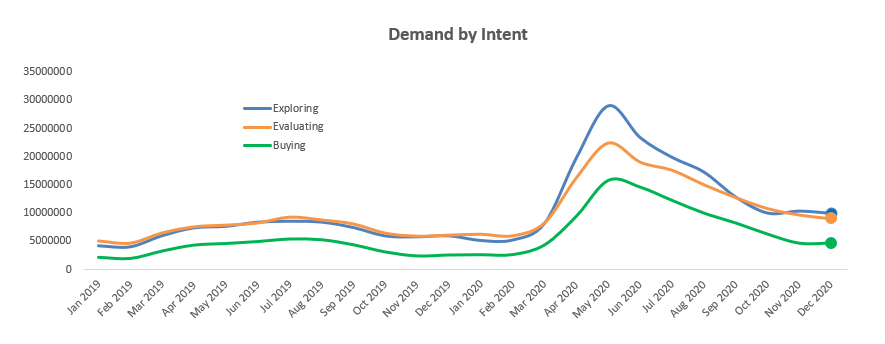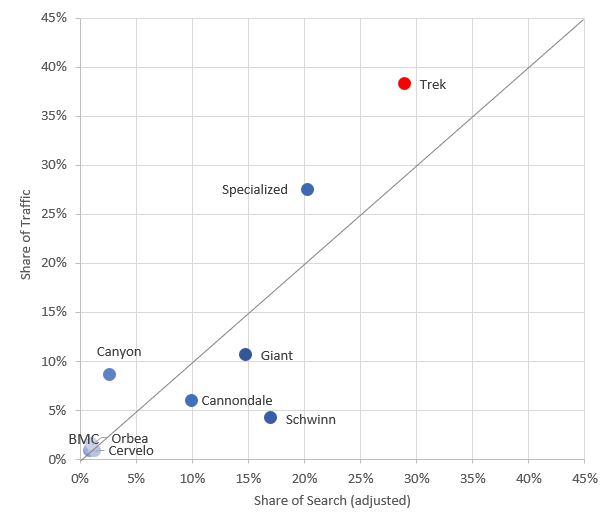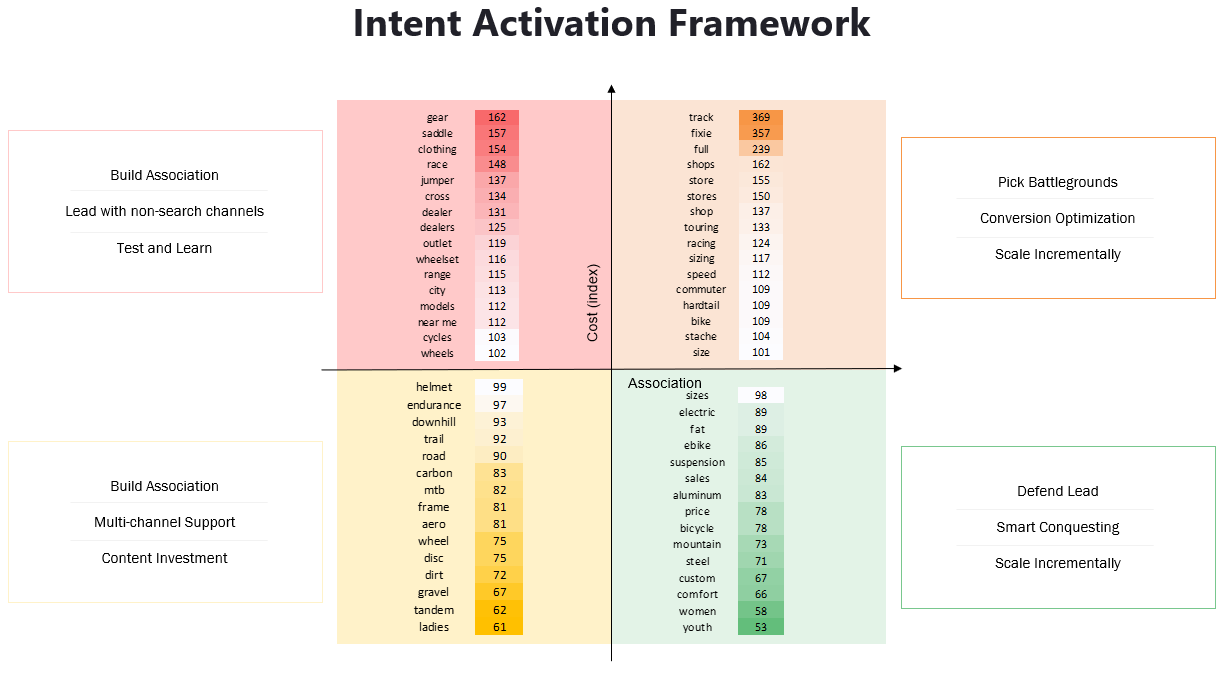Intent-Based Consumer Demand Analysis
Using data from Google searches is a powerful way to understand the active consumer demand in a category. I provide here a quick taste of the type of insights that can be uncovered when we use Natural Language Processing tools and other Machine Learning techniques to inform marketing strategy. I used the cycling category and Trek as the point of reference.
Did you know that 40% of the active demand in the cycling category is Exploratory while only 22% of consumers have an active intent to Buy right away? The rest are in between, Evaluating specific brands and products.
Tailoring content and media to each of these consumer Mindsets can dramatically increase the relevance of marketing efforts.
Demand by Intent
The surge in demand for the category when the pandemic hit the U.S. early in 2020 drove enormous interest in the category, and while Exploring was the leading intent it gave room to brand and product evaluations followed by clear intent to buy. Exploring and Evaluating intent has stabilized at a significantly higher level than before the pandemic followed by Buying behavior. There is room to close the gap and take advantage of the increased knowledge in the category.
Consumer demand for bikes based on analysis of more than 600 million search queries made to Google in the last 24 months in the U.S.
The amount of searches over time classified by intent moments gives us a pulse on the market.
Share of Search
Trek gained Share of Search (a leading indicator of Market Share) during the lockdowns all the way to September then dropped significantly. However, Trek enjoys a disproportionate share of the visits to the store (online only?) reflecting a strong brand equity shared by Specialized and Canyon.
Comparing the Share of Search with the Share of Visits and the Share of Voice provides a powerful way to measure a brand’s equity. Brands gaining a disproportionate share of visits relative to their share of search enjoy higher brand equity. This measure of brand equity can also be tracked over time and used to measure marketing performance.
Demand by Model
The increased demand for bicycles has not come in the same shape for all of Trek’s road models. Domane is the leading platform peaking in July 2020 followed by Emonda that saw an increase in its demand by 7x from Feb 2020 to its peak in June 2020, probably around the launch of its new aero redesign. Interestingly, both peaks occurred months after the industry peaked in May 2020 probably gaining interest from more discerning consumers looking to hit the road for recreational and health purposes vs pure transportation needs.
Comparing the interest for specific products with the category as a whole highlight the nuances and shifts in consumers’ intentions in the category.
Topic Analysis
A topic analysis of more than 30,000 unique search queries reveals 7 distinct intent topics for consumers expressing interest in the category. Each of these topics is an area of opportunity for content development and paid search efforts.
Demand Space for bicycles. A cluster analysis of search queries based on semantic similarity.
Co-search Analysis
A co-search analysis of those 30,000+ search queries reveals important terms associated with Trek vs competitors. When we estimate the cost to bid on those terms in Google we get an actionable multi-channel intent activation framework to guide content focus and media placements.
A highlight of the terms most associated with Trek vs. competitors ranked based on average cost per click provides a powerful framework for search strategy (paid and organic) as well as channel roles and priorities.
Intent-Based Marketing
To see some examples of how these kinds of insights are being used to create more relevant marketing across the globe please check the two cases below.
Intent-Based Marketing is a pioneering approach to doing marketing for brands. It leverages the latest thinking in Behavioral Economics and uses Machine Learning technology to identify consumers’ stage in their journey to personalize experiences to what people want not just who they are. This approach has been the focus of my work for the last 4 years and I am the main architect behind Intent-Based Marketing.







